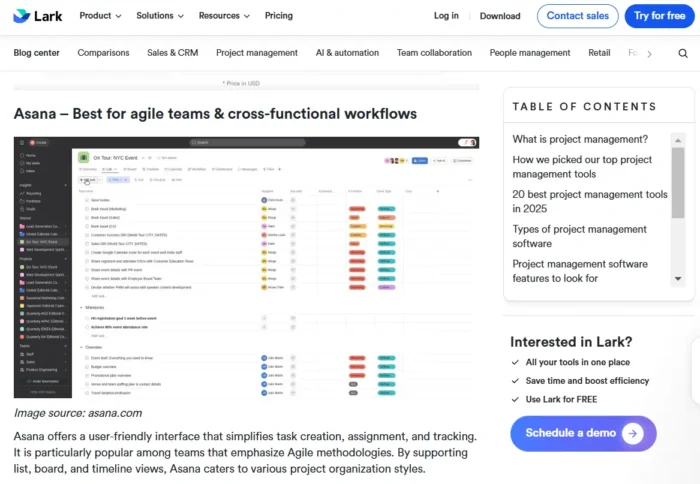The Strategic Value of Regression Analysis in Marketing Research
Regression analysis is an important component of data-driven decision-making. This statistical technique is widely used in various fields, including economics, finance, marketing, healthcare, and social sciences, to understand the relationships between variables and make informed predictions.

Regression analysis offers significant value in modern business and research contexts. This article explores the strategic importance of regression analysis to shed light on its diverse applications and benefits. Included are several different case studies to help bring the concept to life. Regression analysis in marketing is used to examine how independent variables—such as advertising spend, demographics, pricing, and product features—influence a dependent variable, typically a measure of consumer behavior or business performance. The goal is to create models that capture these relationships accurately, allowing marketers to make informed decisions. Let’s explore a specific example in a category known as Casual Dining Restaurants (CDR). In a survey, respondents are asked to rate several casual dining restaurants on a variety of attributes. For the purposes of this article, we will keep the number of demonstrated attributes to the top eight. The data for each restaurant is stacked into one regression. We are seeking to rank the attributes based on a regression analysis against an industry standard overall measurement: Net Promoter Score. Table 1 shows the leading Casual Dining Restaurant chains in the United States to be used to ‘rank’ the key reasons that patrons visit this restaurant category, not specific to one restaurant band. In Figure 1 we see a graphic example of key drivers across the CDR category. The category-wide drivers of CDR visits are not particularly surprising. Good food. Good value. Cleanliness. Staff energy. There is one attribute, however, that may not seem intuitively as important as restaurant executives might think. Make sure your servers thank departing customers. Diners seek not just delicious cuisine at a reasonable price, but they also desire a sense of appreciation. A major automobile company has a public relations disaster. In order to regain trust in their brand equity, the company commissions a series of regression analyses to gauge how buyers are viewing their brand image. However, what they really want to know is how American auto buyers view trust—the most valuable brand perception of this company’s automotive product. The disaster is fresh—a nation-wide recall of thousands of cars over safety issues regarding airbags—so our company would like a composite of which values go into “Is this a Company I Trust.” Thus, it surveyed decision makers, stake holders, owners, and prospects. We then stack the data into one dataset and run a strategic regression. Once performed, the regression beta values are summed and then reported as percentages of influence on the dependent variable. What we see are the major components of “Trust.” Not surprisingly, family safety is the leading driver of Trust. However, we now have Shapley Values of the major components. These findings would normally be handed over to the public relations team to begin damage control. Within days the company began to run advertisements in major markets to reverse the negative narrative of the recall. SparkleSquad Studios is a fictional startup hoping to find a niche among tween and teen girls to help reverse the tide of social media addiction. Though funded through venture capital investment, they found that all their 40 potential product areas, they only have capacity to produce eight. In order to determine the top 8 hobby products in demand, they fielded a study. SparkleSquad Studios then conducted a large study gathering data from thousands of web-based surveys conducted among girls aged 10 to 16 across the United States. The key construct of the study is simple—not more than 5 minutes—and concise to cater to respondents' shorter attention spans. Below are the key questions. Question 1 serves as the dependent variable in the regression. Question 2 responses are coded into categorical variables, 1=Checked, 0=Not Checked. These are the independent variables. Results are shown below in Table 3. Based on the resulting regression analysis, SparkleSquad will commence production of ten statistically significant products. The data-driven approach ensures these offerings meet the maximized determined market demand. Regression analysis gives businesses the ability to predict consumer behavior, optimize marketing efforts, and drive results through data-driven decision-making. By leveraging regression analysis, businesses can gain a competitive advantage and increase their efficiency, and effectiveness. In an era where consumer preferences and market conditions are in constant flux, regression analysis remains an essential tool for marketers looking to stay ahead of the curve. Michael Lieberman is the Founder and President of Multivariate Solutions, a statistical and market research consulting firm that works with major advertising, public relations, and political strategy firms. He can be reached at +1 646 257 3794, or michael@mvsolution.com. Regression analysis is an important component of data-driven decision-making. This statistical technique is widely used in various fields, including economics, finance, marketing, healthcare, and social sciences, to understand the relationships between variables and make informed predictions.
Regression analysis is an important component of data-driven decision-making. This statistical technique is widely used in various fields, including economics, finance, marketing, healthcare, and social sciences, to understand the relationships between variables and make informed predictions.Understanding Regression Analysis in Marketing
Benefits of Regression Analysis in Marketing
Data-driven decisions: Regression analysis empowers marketers to make data-driven decisions, reducing reliance on intuition and guesswork. This approach leads to more accurate and strategic marketing efforts.
Efficiency and cost savings: By optimizing marketing campaigns and resource allocation, regression analysis can significantly improve efficiency and cost-effectiveness. Companies can achieve better results with the same or fewer resources.
Personalization: Understanding consumer behavior through regression analysis allows for personalized marketing efforts. Tailored messages and offers can lead to higher engagement and conversion rates.
Competitive advantage: Marketers who employ regression analysis are better equipped to adapt to changing market conditions, outperform competitors, and stay ahead of industry trends.
Continuous improvement: Regression analysis is an iterative process. As new data becomes available, models can be updated and refined, ensuring that marketing strategies remain effective over time.
Strategic Applications
Consumer behavior prediction: Regression analysis helps marketers predict consumer behavior. By analyzing historical data and considering various factors, such as past purchases, online behavior, and demographic information, companies can build models to anticipate customer preferences, buying patterns, and churn rates.
Marketing campaign optimization: Businesses invest heavily in marketing campaigns. Regression analysis aids in optimizing these efforts by identifying which marketing channels, messages, or strategies have the greatest impact on key performance indicators (KPIs) like sales, click-through rates, or conversion rates.
Pricing strategy: Pricing is a critical aspect of marketing. Regression analysis can reveal the relationship between pricing strategies and sales volume, helping companies determine the optimal price points for their products or services.
Product Development: In product development, regression analysis can be used to understand the relationship between product features and consumer satisfaction. Companies can then prioritize product enhancements based on customer preferences.
Case Study – Regression Analysis for Ranking Key Attributes
Table 1 - List of Leading Casual Dining Restaurant Chains in the United States

Figure 1

Case Study – Regression and Brand Response to Crisis
Figure 2 - Percentage Influence of "A Company I Trust"

Case Study - Regression Analysis/Maximizing Product Lines
Table 2 - List of Potential Product Area Development

Table 3 - Top 10 Hobby Products for Production Determined Through Regression Analysis

Conclusion

 Kass
Kass 









_1.jpg)






















